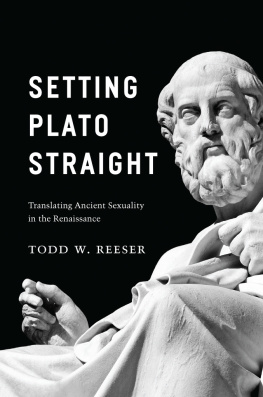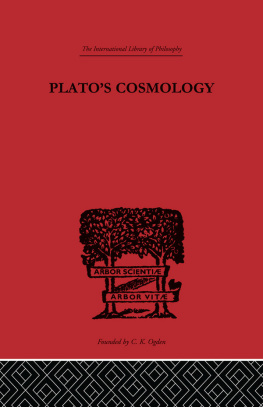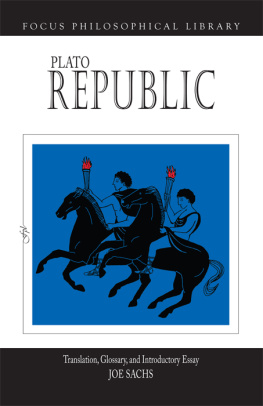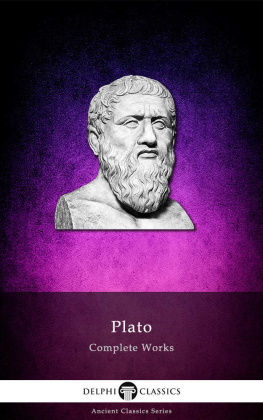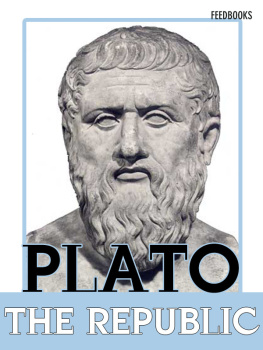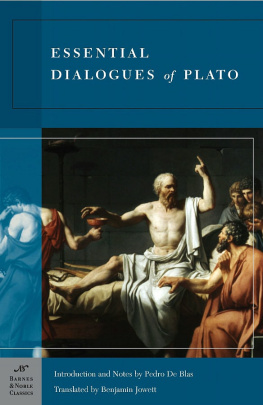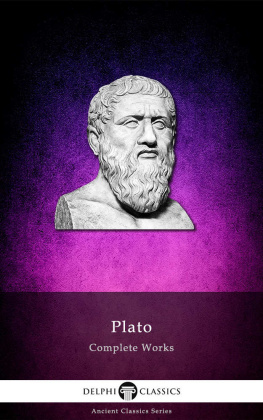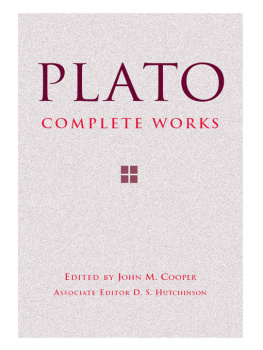Todd W. Reeser - Setting Plato Straight
Here you can read online Todd W. Reeser - Setting Plato Straight full text of the book (entire story) in english for free. Download pdf and epub, get meaning, cover and reviews about this ebook. year: 2015, publisher: University of Chicago Press, genre: Romance novel. Description of the work, (preface) as well as reviews are available. Best literature library LitArk.com created for fans of good reading and offers a wide selection of genres:
Romance novel
Science fiction
Adventure
Detective
Science
History
Home and family
Prose
Art
Politics
Computer
Non-fiction
Religion
Business
Children
Humor
Choose a favorite category and find really read worthwhile books. Enjoy immersion in the world of imagination, feel the emotions of the characters or learn something new for yourself, make an fascinating discovery.
- Book:Setting Plato Straight
- Author:
- Publisher:University of Chicago Press
- Genre:
- Year:2015
- Rating:3 / 5
- Favourites:Add to favourites
- Your mark:
- 60
- 1
- 2
- 3
- 4
- 5
Setting Plato Straight: summary, description and annotation
We offer to read an annotation, description, summary or preface (depends on what the author of the book "Setting Plato Straight" wrote himself). If you haven't found the necessary information about the book — write in the comments, we will try to find it.
Setting Plato Straight — read online for free the complete book (whole text) full work
Below is the text of the book, divided by pages. System saving the place of the last page read, allows you to conveniently read the book "Setting Plato Straight" online for free, without having to search again every time where you left off. Put a bookmark, and you can go to the page where you finished reading at any time.
Font size:
Interval:
Bookmark:
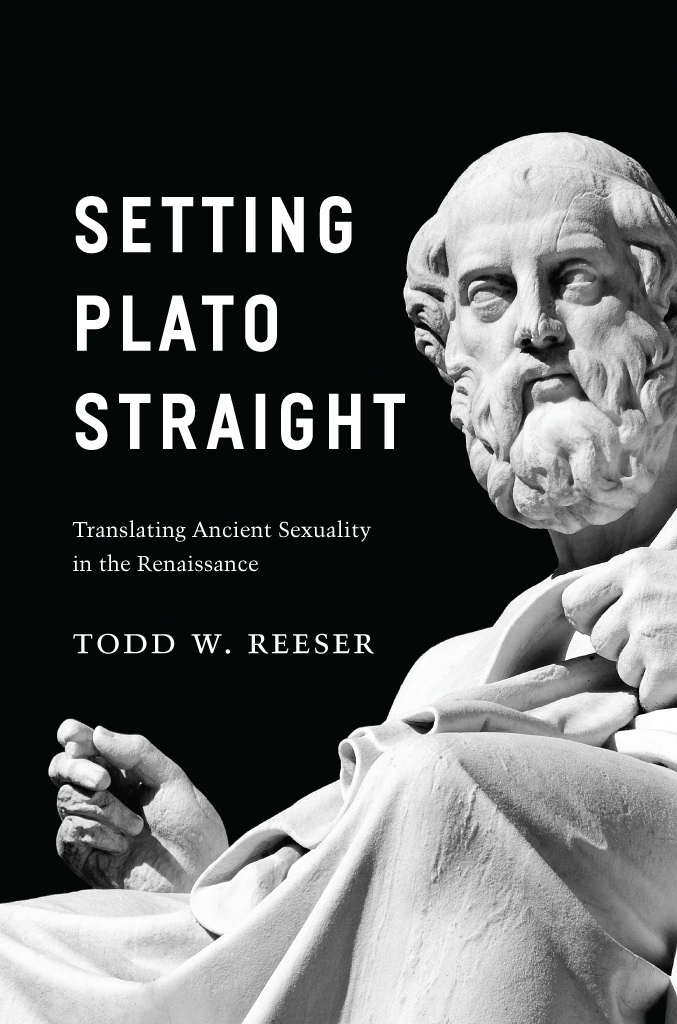
TODD W. REESER
UNIVERSITY OF CHICAGO PRESS
CHICAGO AND LONDON
TODD W . REESER is professor of French and director of the Gender, Sexuality, and Womens Studies Program at the University of Pittsburgh.
The University of Chicago Press, Chicago 60637
The University of Chicago Press, Ltd., London
2016 by The University of Chicago
All rights reserved. Published 2016.
Printed in the United States of America
25 24 23 22 21 20 19 18 17 16 1 2 3 4 5
ISBN-13: 978-0-226-30700-8 (cloth)
ISBN-13: 978-0-226-30714-5 (e-book)
DOI: 10.7208/chicago/9780226307145.001.0001
Library of Congress Cataloging-in-Publication Data
Reeser, Todd W., 1967 author.
Setting Plato straight : translating ancient sexuality in the Renaissance / Todd W. Reeser.
pages ; cm
Includes index.
ISBN 978-0-226-30700-8 (cloth : alk. paper) ISBN 978-0-226-30714-5 (ebook) 1. PlatoTranslationsHistory and criticism. 2. PlatoThemes, motives. 3. Homosexuality in literature. 4. Eroticism in literature. 5. Greek literatureEuropeTranslationsHistory and criticism. 6. Translating and interpretingEuropeHistory. I. Title.
PA4291.R44 2016
488'.04dc23
2015019947
This paper meets the requirements of ANSI / NISO Z39.48-1992 (Permanence of Paper).
This use of the term is not a recent invention. The OEDs list of examples for platonic as not sexual begins with a series of seventeenth-century examples, the first occurring in Ben Jonsons 1631 play The New Inn. William Davenants 1636 English play The Platonic Lovers is about two sets of male-female couples, one platonic and the other not platonic.
But if there is a generally accepted meaning in these various time periods, it is a historically inaccurate one. In Plato, loveor more precisely, erosincorporates the senses and is not necessarily asexual. If fidelity to Plato were the goal, the phrase Socratic love would be better suited to describe the relation since Socrates appears as chaste in Plato. That Voltaire in the eighteenth century uses the phrase Socratic love to refer to pederasty suggests that platonic love was already defined as an asexual relation between men and women. While the Platonic dialogues absolutely allow for the possibility of intimate, affectionate, and spiritual love, what we and early moderns call platonic love would likely seem somewhat strange to Plato. The scene from the story Platonic Friendship might have confused Plato, too, had he read it. Although Plato never used the phrase, the sense of platonic love for him would undoubtedly evoke the image of a man with a younger male. While male-female love is not always excluded in Plato, male-male eros was clearly the highest form of love and platonic love would certainly not be imagined by Plato as between two people of different sexes. Were the philosopher to read craigslist, he might take strictly platonic as a category requiring a man and a boy of a fixed age and as discounting love between a man and a woman or between two grown men.
Mrs. Judsons notion of platonic, then, does not correspond to Plato on two counts: the sex of the two people involved and the possibility of sexual activity between them. How did this shift happen? How did Platonic eros turn into platonic love? How did it become heterosexual and purified of sex? This process of setting Plato straight is the subject of this book, which recounts the story of how and why these changes happened. Not a rapid or sudden shift, it takes place in the Renaissance over the course of approximately a century and a half, particularly in Italy and France. While the fifteenth-century Florentine Platonist Marsilio Ficino is credited with coining the Latin phrase platonic love [amor platonicus], he does not single-handedly transform Plato, but rather he is a partalbeit an important partof a much larger cultural transformation. By virtue of transforming Platonic same-sex sexuality, the Renaissance creates a type of heterosexuality, even if the term or concept is not yet articulated as such. This book is composed of a series of studies of important Western European texts in which this transformation occurs. While I do not treat the English context (that would require a second book), the texts studied here strongly influence what happens across the Channel as the English are reading many of these texts. I am told by native speakers of many languages (e.g., Arabic, Dutch, German, Hebrew, Polish, Portuguese, Romanian, Spanish, Turkish) that a version of platonic love in the modern sense exists in their languages, suggesting that this usage, whose origins I locate in the Renaissance, has become widespread around the globe and that the influence of the texts I study extends well beyond their specific cultural contexts.
Despite this transformation of eros, some thinkers display an awareness of the anachronism of platonic love. In the play The Platonic Lovers, the physician-philosopher Buonateste remarks about Plato to Lord Sciolto: I still beseech you not to wrong / My good old friend Plato, with this court calumnie; / They father on him a Fantastick Love / Hee never knew, poore Gentleman. He is responding to the Lord who noted that his son is very much Platonically given (139). Soon after, another character asks the philosopher Did not Plato write of Love? to which the philosopher responds: Divinely sir, but not such kind of Love / As Ladies would have now; they mistake him (140). Part of the issue in the play is Scioltos son, who mistakes [Plato] too since he understands no Greeke (140). The Lord thus plans to givet him straight (140). The philosophers comic remarks suggest an awareness that the English of the time are seeing Platonic eros as straight instead of getting him straight, thus that the cultural process of setting Plato straight is in no way an even or linear process without hiccups. One of the key arguments of this book is that the Renaissance does not fully set Plato straight, and that the numerous and various attempts to do so never fully take hold. In this way, Setting Plato Straight is meant as a contribution to a twenty-first-century sexual counterdiscourse that reveals how our assumptions about so-called platonic love cover up a series of normative sexual slippages and mutations.
This is a book on originals and translations, but space restrictions hinder me here from providing the original text in all cases. When an English translation sufficiently conveys the sense of the original, I provide an English translation only. When key phrases or sentences inform my discussion, they are provided in brackets. When an entire citation is important to my discussion, I provide the full original. In general, I offer the French original of literary passages. I tend to cite from the Loeb edition of Plato: Plato, Lysis, Symposium, Gorgias, trans. W. R. M. Lamb (Cambridge, MA: Harvard University Press, 1996). At times, however, I prefer phrasings from another translation. In such cases, I give a note with the edition cited. I use the Latin alphabet for Greek words and phrases (with = and =). In cases of a primary text in which the original text is provided, I have modified it for consistency. When I do not cite a translation, the translation is my own.
The parenthetical numbers following an English translation from bilingual editions such as the Loeb (e.g. 11, 12) signify, first number, the beginning page of the English translation, and, second number, the beginning page of the original Greek or Latin. If the set of two numbers appears with the numbers separated by a semicolon (e.g., 11; 12), the second number signifies the original Greek or Latin that appears in a different edition from the English translation.
Font size:
Interval:
Bookmark:
Similar books «Setting Plato Straight»
Look at similar books to Setting Plato Straight. We have selected literature similar in name and meaning in the hope of providing readers with more options to find new, interesting, not yet read works.
Discussion, reviews of the book Setting Plato Straight and just readers' own opinions. Leave your comments, write what you think about the work, its meaning or the main characters. Specify what exactly you liked and what you didn't like, and why you think so.

